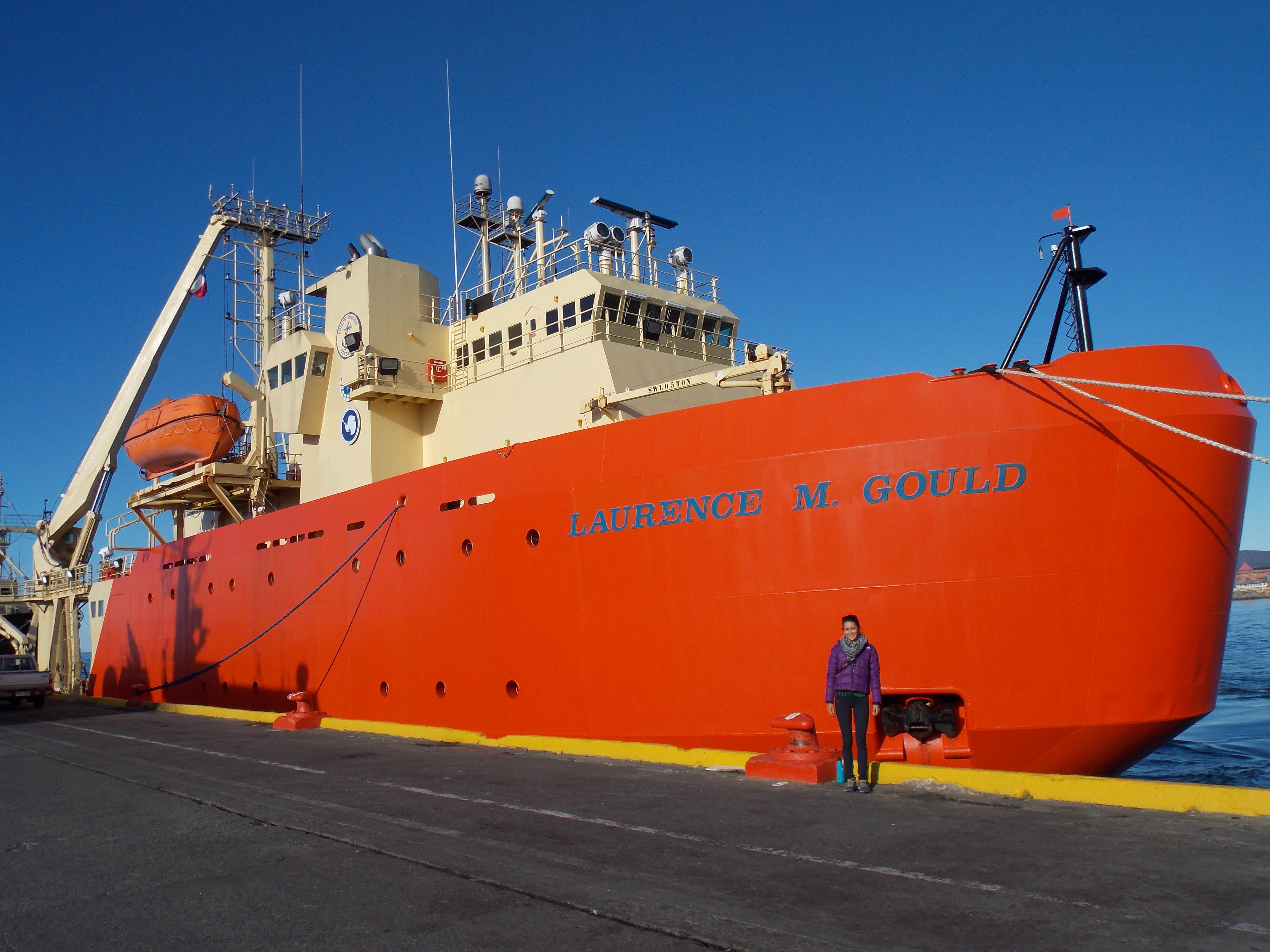By Jamie Sibley Yin
Dr. Valerie Loeb is an adjunct professor at Moss Landing Marine Labs. Currently, she functions as an independent Antarctic ecosystem research scientist collaborating with Jarrod Santora of UC Santa Cruz. In April, she headed out to sea with a new NSF funded project entitled "Pilot Study: Addition of Biological Sampling to Drake Passage Transits of the 'LM Gould'". The following are updates from the field by Jamie Sibley Yin who is in charge of communications.
April 8th, 2015 - First Entry
My chair sways gently, a jackhammer-like sound comes from an undisclosed location, men with white beards and black wire rimmed glasses stare into their laptops. Where am I? I’m somewhere in the Straits of Magellan, en route to Antarctica.
Hi, my name’s Jamie and I’m going to share my journey to, and my time in Antarctica with you all. I’m a recent marine biology graduate from the University of California, Santa Cruz, and I’m working with Valerie Loeb of Moss Landing Marine Labs on her ecosystem survey of Drakes Passage.
Today was the first day of real work--which I have been eagerly anticipating. It wasn’t quite what I was expecting but, then again, I haven’t known what to expect this whole time. There was lots of back and forth, running in and out of the ship. Tying down the microscopes and lights putting away boxes of petri dishes, pipettes, and one liter glass jars.
Outside the cool wind blows and the sea delivers unexpected blasts of seawater to my face. It’s cold, but not unbearably so. We have been issued special ECW (extreme cold weather) gear, which consists of everything you need to survive on an Antarctic boat including steel-toed boots (always needed on deck) and lined rubber gloves similar to the ones my mother uses to wash dishes.
The bird and marine mammal observer for our project, Mike, said he saw a minke whale and various birds including a giant petrel. I visited him in the bridge where he does his observations behind panoramic windows through a large pair of binoculars. The bridge is on the fourth level of the ship where the captain and mates orchestrate the movement of our ship, the Lawrence M. Gould or LMG. All I could spot were some birds that looked like small sea gulls (actually Antarctic fulmars), and lots of choppy waves. On the horizon I saw a snowy island, which, upon further inspection proved to be a cruise ship.
I’m still getting my “sea legs” as they say, and after breakfast I felt like regurgitating the eggs and bacon I had just eagerly consumed. But after seeing a whale, some Peale’s dolphins, and two penguins, my on-the-verge seasickness had left me. It was time to take a nap in preparation for our 2am zooplankton net tows.

Project summary by Dr. Valerie Loeb
Overview
Changes in the Southern Ocean due to climate warming are expected to be visible in ecosystem dynamics. Analysis of ADCP records from supply transits of Drake Passage by the “L.M. Gould”, 1999-present, indicate that underway observations of the upper ocean scattering layer can serve as a proxy to monitor these changes. Recent results indicate that interannual variability in backscattering strength (i.e., quantity of responsible organisms) is correlated to climate indices. The interpretation of these ecological changes is severely limited because the sound scatterers have not been identified and linkages to upper trophic level predators are unknown. This project adds biological sampling to the “L.M. Gould” time series with the expectation that ADCP data, calibrated with net-tow data and depth-referenced underwater videography and predator distribution, can be used to extend the spatio-temporal coverage of in situ sampling in Drake Passage.
Intellectual Merit
This proposal provides a novel approach on how to make use of long term ADCP records in identifying those organisms responsible for seasonal, interannual and longer term variability observed in ADCP records collected since 1999. Net tows accompanied by videography during spring, autumn and winter periods will provide information on the abundance and taxonomic-size composition of organisms likely to be dominant sound scatterers within the 3 biogeographic zones of Drake Passage. The distribution and densities of distinct zooplankton assemblages and backscattering strength will be linked to seabird/mammal predator populations to illuminate ecologically important areas (i.e., characterized by high trophic transfer), which may be candidates for Important Bird Areas (BirdLife International). Establishment of “bottom-up” trophic connections enable future integrated assessments of climate variability on upper trophic level predators. Examination of ADCP backscatter variability and trends in southern Drake Passage with respect to zooplankton data independently collected here from 1994-2009 should indicate organisms underlying past ADCP trends and cycles relative climate indices (e.g., ENSO). Successful implementation of this project may initiate spatially and temporally coherent biological sampling extending over a sufficient number of years into the future that would provide statistically robust data sets on the species composition and abundance of zooplankton and seabird/mammal populations essential for assessment of significant ecosystem change in Drake Passage associated with a warming Southern Ocean.
Our first field season is October 27-November 22, 2014 (Austral spring) and the second is in April-May, 2015 (autumn).

